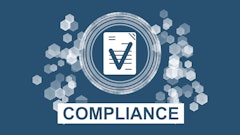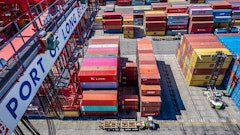
If a few potholes need to be filled on a single street, it’s likely closed for a few hours at night to prevent disruptions. But if two lanes need to be added to a 25-mile stretch of an interstate passing through a metro area, construction must be carefully planned in advance to allow vehicles to continue using existing lanes and minimize disruption. That’s where it helps to have top-notch civil engineers and skilled project managers (PMs) in the mix.
In essence, supply chain transformation projects are like large highway infrastructure projects. During supply chain transformation, customers expect deliveries, suppliers to continue to deliver, competitors to announce promotions and shareholders to dial into earning calls. Basically, it’s life as usual.
But during a transformation initiative, the supply chain undergoes an irreversible structural change. The end state is always a greener pasture (more lanes in an interstate), but no one wants to live through the dust and rerouting of the transition phase (construction zone, lower speed limits).
Unfortunately, there are no shortcuts to supply chain transformation success. But a robust program management office (PMO), which takes an analytical approach for transition time and resource scheduling, and develops always current and realistic plans, can make the journey both enjoyable and successful.[1]
Like infrastructure projects, supply chain transformation programs are generally riddled with delays, cost overruns and multiple incidents of firefighting. During a recent engagement with a construction services company, a business leader complained that there were far too many crisis situations that diverted critical resources to fixing current business situations rather than working on the transformation initiative.
Due to these firefighting events, resources were either spread very thin in some cases or underutilized in others. Even with an overtime workforce and overnight shipments, customer delivery windows were missed and sales directors started losing confidence in the supply chain. Eventually, project backsliding resulted in a poor quarterly earnings number and the transformation initiative was temporarily halted.
This hit-a-brick-wall outcome is not unique at all. And we all hear of the supply chain disruption that can occur as a result of project delays. The reasons for failure may seem industry- or company-specific at the first glance (“our industry is unique, standard methods don’t work here”).
But underlying root causes are the same in over 80 percent of cases. Unfortunately, most companies can approach their setback with myopic vision, trying to cure the symptoms (ship everything overnight or produce X item at twice the quantity or hire more temps or hire a new project manager, etc.), while the need of the hour is a detailed root cause analysis and corrective measures.
All who seek to transform their supply chains come up with objectives and goals for transformation, but only those who develop good implementation capabilities (or acquire those capabilities by hiring highly competent consultants) achieve their objectives. McKinsey research[2] shows that a well-executed, clear and detailed plan/implementation returns 143 percent at the end of the supply chain transformation initiative’s implementation vs. a not so clear plan/implementation, which returns a much less significant 35 percent.
An Abbreviated Transformation Checklist
Throughout our multiple supply chain transformation initiatives with clients, Chainalytics developed a transformation checklist. With a few strategic tweaks, it works well across industry segments (from wireless distribution to construction services to chemicals manufacturing).
Three items from the list are absolutely necessary for any supply chain transformation program to reach or exceed business goals:
- Engage a skilled and robust PMO to ensure strategic alignment (we are doing the right things to reach the company's goal) and continuous alignment (we are constantly steering executives to follow the plan). Recently, we came across a situation during an engagement with a billion dollar manufacturing company in which the PMO was created just as the implementation began. It took 10 weeks for this team to fully understand the project scope, institute changes and report actual status to project sponsors. This is far from an ideal situation. A PM or PMO should be involved right from the very inception of the project—even better, from the very inception of the business case. The same PM must be part of implementation and transition teams to ensure strategic alignment. Overall, the PMO is the primary owner of the program and must align all stakeholders to the plan (his or her presence can also help the implementation avoid the always-dreaded flavor-of-the-month fatigue that besets change programs at some organizations). All other standard project management tasks apply here (status reporting, documentation, meeting cadence, etc.).
2. Take an analytical approach to calculate (and model?) resource needs during the transformation and transition periods. Here resource means people, systems and inventory. The PMO should create an implementation plan, model the resource needs with inputs from the project plan, run a few scenarios and then request resources. Duplication of resources for business continuity (backfilling of positions) is a reality and must not be underestimated. Rather than planning for additional resources when the crisis hits, make it part of the model. Also, it’s important to identify all possible risks (including internal risks, such as information technology (IT) deployment delay, inventory shortage and increased overnight shipments, and external risks, such as regulatory risks and litigations) and all possible opportunities (early deployment and higher demand). Assess the impact of these risks, assign probabilities, segregate them into different work streams, and classify them as controllable and uncontrollable. Thus calculated, resource needs are key inputs to the business case. Remember, resources are much more expensive during a crisis. Executives see unplanned cost at more than twice its level, so it’s a better idea to plan in advance.
3. Always develop and maintain a current and realistic plan that uses the program plan as a sort of structured guideline. Everyone creates a program plan, but in many cases, it is considered sacrosanct or immutable, has unrealistic targets, or all of the above. Transformation program goals are not structured around implementing a system or process, but around reaching a company goal. Create an integrated plan taking into consideration work streams, dependencies, training needs, risk mitigation strategies (already collected for the resource model) and the critical path. Consider the program’s overall length—from critical path timeline perspective, and based on prior experiences inside the company or in the marketplace (we are going to do this project in record time is a classic planning fallacy and it doesn’t work except in self-help book examples).
Planning is like forecasting: If it’s not adjusted for new business situations (marketplace challenges, key personnel changes, etc.), it is useless. It is iterative in nature and must reflect the most recent status of the initiative. This is not to say that milestones are moved a day before due dates, but any new situations must be quickly assessed to make realistic changes to the plan. This is also the reason why Chainalytics typically advocates for phased go-lives (which are non-dilutive in nature, too, as an added advantage) compared to a Big Bang delivery. With specific and tangible tactical milestones, reporting program success becomes more accountable.
These three steps or tenets are just starting points that are then followed by expanding into sub-activities.
If you want your transition to move smoothly--with as little dust and disruption as possible—your transformation team needs to be as much strategic as tactical. Too much talk of strategy and too little attention to implementation means your project quickly disintegrates. But by maintaining flexible resources and planning alongside a structured (in PMO) design, your transformation program will succeed.
[1] Cartoon Reference: https://bernardtmartin.files.wordpress.com/2010/04/roi_cartoon.jpg
[2] Jennifer A. LaClair and Ravi P. Rao, “Helping employees embrace change”, http://www.mckinsey.com/insights/organization/helping_employees_embrace_change


























